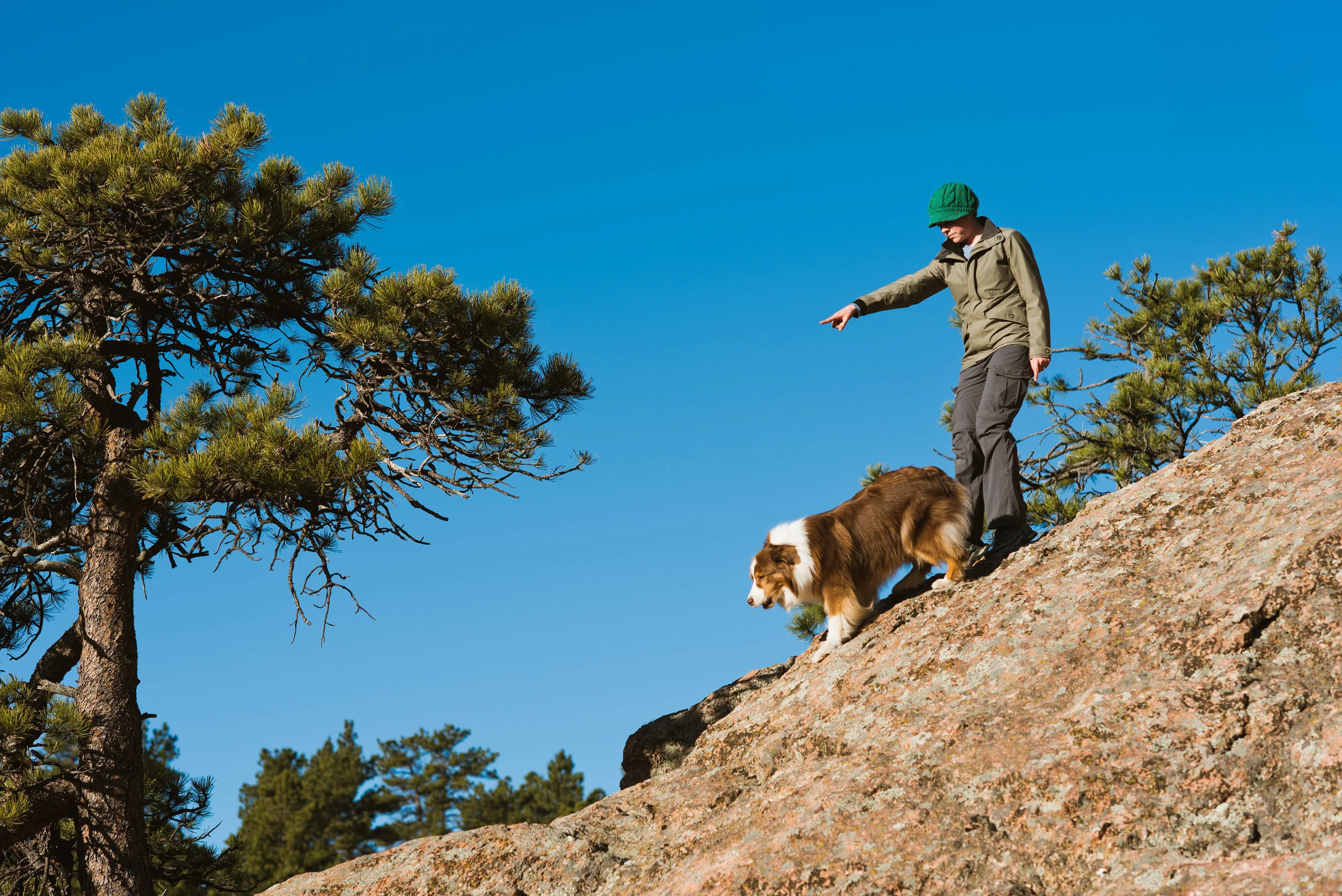By Benah Stiewing
Rock-solid, reliable recalls are an incredibly important skill for you and your dog! Recall, or coming when called, is critical to you and your dog being able to enjoy the world together, off-leash. Building an off-leash recall is about managing our dog’s freedom as we cultivate a strong history of reinforcement between you and your dog.
So often without realizing, we only call our dogs when we are calling them away from something, perhaps that delicious chicken leg that fell from a trash can, the dog who lives next door, or a very speedy squirrel. Our dog’s recall word very quickly comes to represent loss and our dogs are well aware of this. The dog hears their name or recall word and quickly creates more distance between them and their handler because they don’t want to experience a loss.
To begin changing this narrative, we start by building value for a new recall word. Practice calling your dog using this word a few throughout the day, but only use this word if you are in an environment with minimal distractions (i.e. your living room, without any toys or other pets present) and have high-value reinforcement to reward your dog with when they have successfully come to you. Use motion and verbal encouragement to add value to the behavior. I toss a treat to get my dog away from me. Once my dog has eaten the treat, I say “Fido, come!” in a fun, light voice, turn away from Fido, and run away (short, small steps), saying “Yay! Wow!” as the dog continues moving towards me. When my dog reaches me, I click and reward with high-value treats. I repeat this game multiple times every day for a few days, and gradually begin adding more distance and choice. We begin to generalize the behavior by moving into different rooms of the house, and eventually into the yard. If my dog is unsuccessful, I need to take a step back and decrease difficulty temporarily before making it harder again.
Here’s a video of the foundation pieces of this game!
We do not start letting our dogs off-leash out in the world if we aren’t absolutely confident of a few key things:
If our dog doesn’t come back to us, they are not in danger.
We have the highest-value item in the environment.
Our dog is not going to have to make a difficult choice between us and something else.
If we want to give our dog more freedom in a high-distraction environment before we feel they are ready for off-leash, we are going to use our recall transition tool, the long-line! This is just a really long leash (30-50 feet) that we would want on a back-clip harness. (Our favorite long-line is this one from Trust-Your-Dog!) We reward our dogs everytime they offer engagement while we are out in the world, no matter the type of leash or exercise. We want it to be a reliably reinforcing behavior for our dogs to check in with us. This is especially important to practice on the long-line as we begin to increase freedom.
Go slowly with your recall training! It takes time to build value for coming back when called, and know that it’s impossible to spend too much time on each expansion of freedom. We want coming back to us to represent the absolute best time with food, praise, or toys. Use your environment to reinforce! Recalling your dog away from their best canine friend? Reward with food, then release them back to playing. Remember the fundamental principle of what recall should represent, and don’t use your recall when your dog has to do something they may not fully enjoy, like being leashed and directed to leave the fun activity.
The skills I describe here are just the beginning! If you and your dog want more guidance as you build this behavior, we have a webinar just for you! Check out the Off-Leash Hiking Prep webinar here!
Summit Dog Training offers group dog training classes & private lessons in Fort Collins, Colorado, as well as online self-study courses and online private lessons for education on how to live the best life with your dog! If you are looking for more training support, please don’t hesitate to contact us! We’d love to help you and your dog get ready for any adventure.





